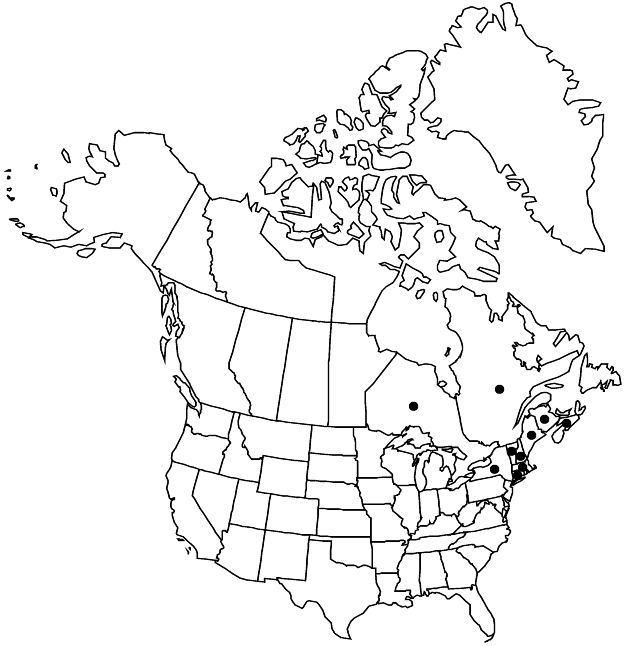Crataegus flabellata
Verh. Vereins Beförd. Gartenbaues Königl. Preuss. Staaten, ser. 2, 1: 240. 1853.
Shrubs or trees, 40–50 dm. Stems: twigs: new growth reddish at first, usually sparsely pubescent, 1-year old deep chestnut-brown, older dull gray; thorns on twigs 1-year old shiny, dark-brown, stout to slender, 4–6 cm. Leaves: petiole 1–2 mm wide, length 40–50% blade, glandular; blade glossy, dark green, broadly elliptic to ovate, 4–7 cm, base cuneate to slightly rounded, lobes 4 or 5 per side, sinuses deep, lobe apex acuminate, margins sharply serrate, teeth gland-tipped, veins 5 or 6 per side, apex acute, abaxial surface glabrous except along veins, adaxial densely appressed-scabrous young, glabrescent. Inflorescences 5–10-flowered; branches villous; bracteole frequency not recorded, linear. Flowers 13–17 mm diam.; hypanthium glabrous or villous at base; sepals 4–5 mm, margins entire, glandular to glandular-serrate, rarely nearly eglandular, apex acute, abaxial pubescence not recorded; stamens 5–10 or 20, anthers usually pink; styles 3–5. Pomes crimson, ± ellipsoid, 8–10 mm diam., sometimes ± pruinose; sepals spreading or usually erose, not or obscurely elevated; pyrenes 3–5, dorsally deeply grooved. 2n = 51.
Phenology: Flowering May–Jun; fruiting Sep–Oct.
Habitat: Brush, successional fields, fencelines, woodland edges, open woodlands
Elevation: 10–200 m
Distribution

N.B., N.S., Ont., Que., Conn., Maine, Mass., N.H., N.Y., Vt.
Discussion
Crataegus flabellata occurs along the Niagara Escarpment in Ontario, on both sides of Lake Ontario and the St. Lawrence, to New Brunswick and Nova Scotia, and to Massachusetts. Reports for Newfoundland have not been substantiated.
Crataegus flabellata is distinctive with its leaf blades glossy dark green, ovate to broadly elliptic, cuneate at the base, and with deep acuminate lobes. Specimens with less glandularity or serration of the sepal margins may resemble C. fluviatilis. In spite of the obvious differences in morphology and range, C. flabellata and C. macrosperma often have been combined by floristicians. From C. chrysocarpa, C. flabellata is distinguished by its shinier, ellipsoid, glabrous fruit, by the usually deeper, acuminate lobes of its glossy, dark green leaves, and by longer, slightly more acute sepals. Typically, the inflorescences and hypanthia of eastern C. chrysocarpa are densely hairy, practically tomentose, unlike C. flabellata with its more sparsely hairy pedicels and glabrous distal hypanthia. It is conceivable that, due to morphological intermediacy and the sympatry of all three species within the range of C. flabellata, this species represents the result of ancient hybridization between C. chrysocarpa and C. macrosperma.
Crataegus flabellata is usually divided into two varieties: var. flabellata (10 stamens) and var. grayana (20 stamens), the latter being particularly common in southern Quebec. There appears to be little, if any, other constant differentiating feature. Crataegus crudelis, also from Quebec, is a form recognized by long thorns (to 10 cm).
The name Crataegus densiflora Sargent, which pertains to C. flabellata, is illegitimate.
Selected References
None.
Lower Taxa
"thin" is not a number."glandular" is not a number."adnate" is not a number."dm" is not declared as a valid unit of measurement for this property.